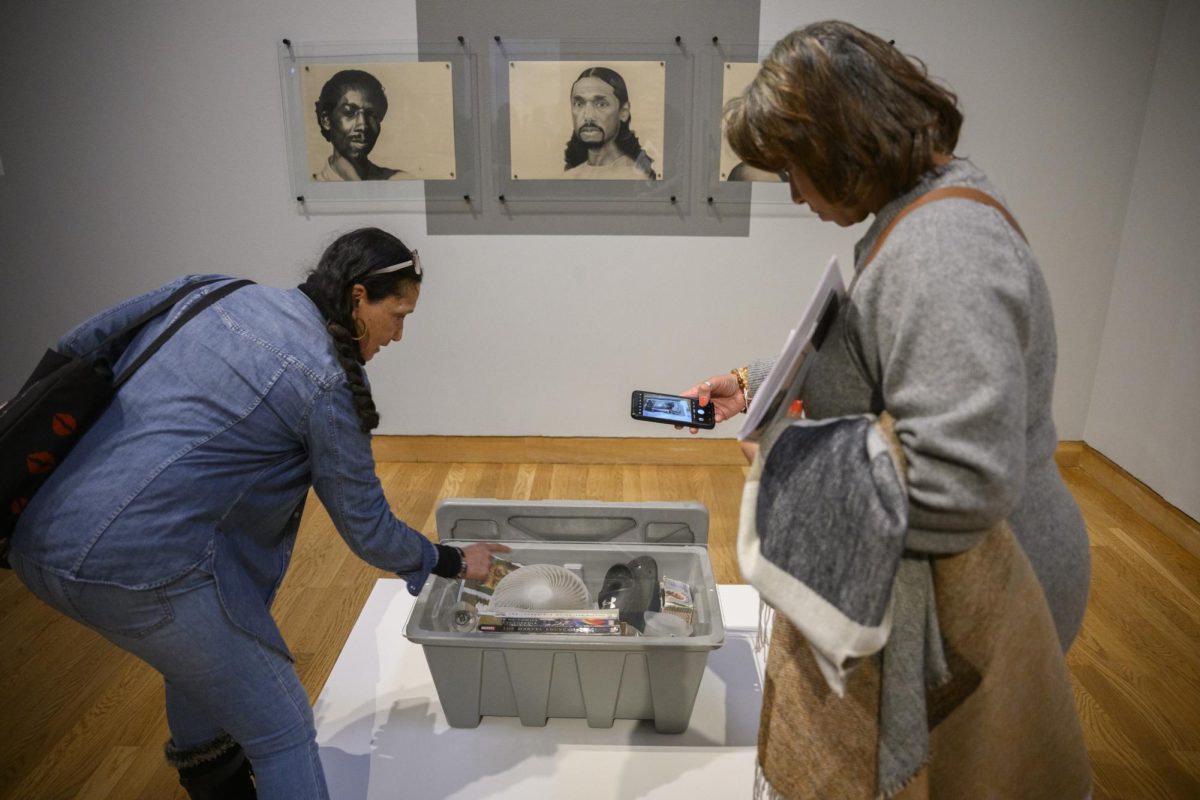Anselmo Cornejo has never seen a sad skeleton.
Ask him. That’s what the local Mexican artist will tell you.
“No, no, no,” Cornejo said. “I’ve only seen them with the big teeth and big smiles.”
Skeletons (“calaveras” in Spanish) are a staple of the Mexican celebration called the “Day of the Dead.” While symbolically they are the gatekeepers between the world of the dead and the living, they are also a reminder of the thin veil that exists between both states of being.
“In Mexico, the calavera is part of life,” Cornejo said. “It is like my sister or best friend, you know? We live with the dead always.”
Emerging from the cultural crossroads of Mexico’s Aztec customs and Roman Catholicism, the “Day of the Dead” is a time when spirits of the deceased re-enter the realm of the living and visit their relatives. The official date is Nov. 2.
This weekend, south Minneapolis will be the site of a “Day of the Dead” celebration and procession.
The parade will start at Mercado Central and move south along Bloomington Avenue toward the Mira Gallery. There, local artists and the Latino community will showcase their traditional “ofrendas” (altars) built to provide the dead with offerings of their favorite foods, beverages and memories of life.
Remembering family
While communing with the dead is a spooky concept, in Mexico it is very much a respectful celebration.
Enrique Montero, one artist whose ofrenda is on display, said he learned the tradition from his family.
“My grandmother was from the Yucatan Peninsula and she was Mayan,” Montero said. “So, she kept alive all of those Mexican traditions in my family for generations.”
Montero’s ofrenda commemorates his nephew, who was killed in Mexico City and left abandoned in a car.
Montero said “Tocando Puertas,” the title of the piece, is the Spanish translation of “Knocking on Doors,” a symbolic title that reflects his nephew’s futile search for help and support.
Fresh out of jail, Montero said his nephew began knocking on doors because he was scared.
“Nobody opened a door,” Montero said. “So, one day he knocked on the door to the dead, and the door opened.”
Metaphors aside, Montero said it’s the tradition, and not the artistic aesthetic, that informs his ofrenda.
“People call this art,” Montero said. “But, the way I see it, I’m trying to keep my tradition. It is the same thing that my great-grandmother, grandmother and mother did.”
Guiding the dead
The dead don’t crossover into this realm on their own intuition.
A series of offerings placed on the ofrendas, such as incense, candles, tissue paper and “pan de muertos” (bread of the dead), act as runway lights for the spirits.
Marigolds are the traditional flowers used in the celebration. Called the flower of four thousand petals, they can lure the dead to the ofrendas with their scent.
“This flower smells so much,” Cornejo said. “Let me tell you, this flower smells like dead people.”
Cornejo, originally from Guadalajara, Mexico, set his ofrenda up in commemoration of the victims of Sept. 11, 2001, his grandparents, his uncle and a female clown he knew who recently died.
The backdrop of Cornejo’s ofrenda is a tunnel of light. Hovering above it, a monstrous skeleton holds open a pair of drapes for the spirits to pass through.
The plates of beans and rice are for his farming grandparents. For his uncle, a noted drinker, Cornejo has left a bottle of wine and tequila.
“He liked to drink too much,” Cornejo said.
In Guadalajara, Cornejo and his family went to the cemetery and put food and candles out on the gravesite. At midnight, they began to eat.
“When you are with your family, there is no spooky stuff,” Cornejo said. “At this hour, everyone eats together – the living people and the dead.”
So, while some Americans honor their October ritual as a day of haunts and ghoulish gut rot, celebrating in graveyards isn’t such a far-fetched idea after all.
“This is really important for me and my family,” Cornejo said. “In Mexico, it is a tradition of my mother, my father, my grandpa, my grand-grand-grandma. And it shows us how we can give this respect to the dead.”







